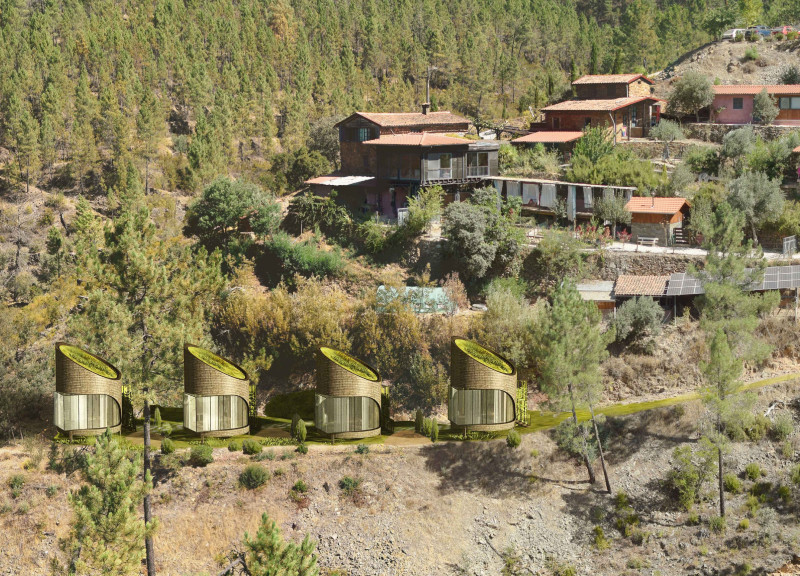5 key facts about this project
The design focuses on integrating meditation spaces within a natural landscape. Set in an environment that promotes calmness, the aim is to align the structure with its surroundings. The concept is based on nature as a genuine element, with forms reflecting organic growth and enhancing the experience of contemplation.
Conceptual Framework
A circular form serves as the main design element. This shape is chosen for its ability to improve spatial use and movement. Unlike traditional rectangular layouts, the circle invites a more natural flow within the space. It acts as a fundamental aspect of the design, connecting the architecture to the organic elements found in nature, and ensuring a comfortable atmosphere for users.
Integration with Nature
The design features a transparent stained glass window that connects the interior to the outside. This window brings in natural light and establishes a visual link with the surrounding landscape. It not only enhances the aesthetic but also emphasizes the connection between the occupants and their environment, creating an immersive experience that encourages peace.
Meditation Cabins
Meditation cabins are strategically placed for privacy, separated by hedges to maintain a sense of solitude. Each cabin includes an open area dedicated to meditation, thoughtfully oriented to provide views of a gorge below. This positioning allows users to engage deeply with their surroundings, enriching their meditation practice.
Interior Flexibility
Flexibility is an important consideration in the interior design. The cabins include a massage table that can be integrated into the floor plan. This design choice allows for clear space during meditation while providing utility. When in use, the table enhances the connection to nature, as a mirrored detailing beneath it creates an engaging sensory interaction.
The choice of materials supports a natural aesthetic. Traditional Portuguese tiled roofs are referenced through the use of wood chips for the veneer. This decision links the building to local architectural styles and fosters a dialogue between the structure and the environment.






















































